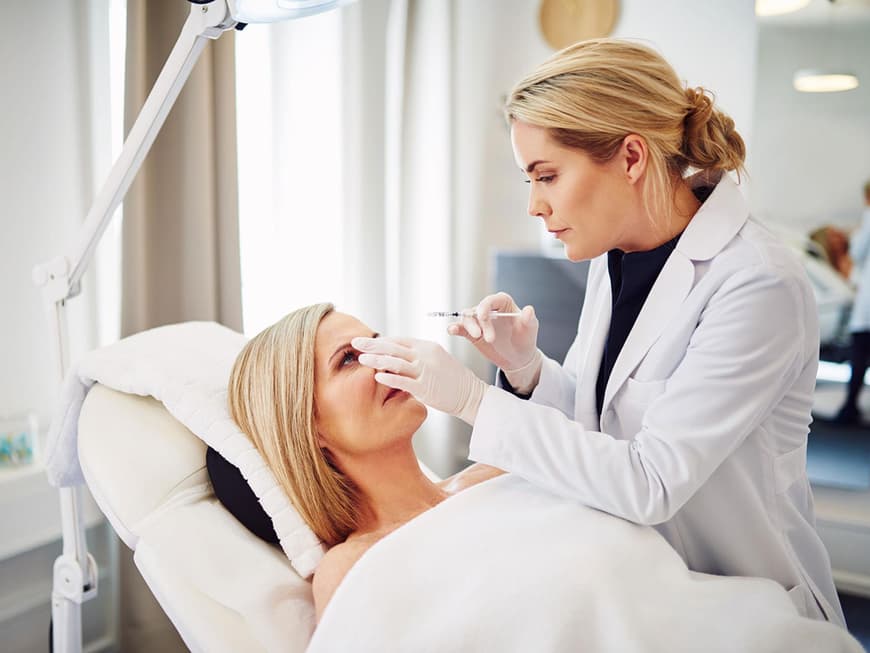
Botox as a wrinkle stopper
The best known and most common use in this country is in aesthetic plastic medicine. Botolinum toxin A is mainly used when (facial) wrinkles need to be ironed out. The neurotoxin can be used to prevent muscles from contracting. This means that frown lines, for example, can no longer be wrinkled and the forehead appears smooth. Botox is also used for wrinkles around the eyes or mouth.
Botox for muscle paralysis
Botox was originally used primarily in the field of neurology: for movement disorders (dystonia), in which involuntary and abnormal muscle movements occur, such as torticollis. Treatment with the neurotoxin has also proven effective for eyelid spasm (blepharospasm).
Botox for heavy sweaters
Botox therapy is extremely effective for excessive sweating: the toxin inhibits the release of acetylcholine from the nerve cells, the sweat glands are no longer activated and the patient sweats less. However, the effect wears off after around six months.
Botox for migraine patients
Anyone who suffers from chronic migraines can have Botox injected into at least 31 areas of the head, neck and shoulder muscles. The muscular relaxation relieves the symptoms and prevents further migraine attacks.
Wonder weapon hyaluron
Hyaluronic acid is regarded as a real miracle weapon in the fight against the signs of aging. No wonder, as it is a substance produced naturally in the body that can bind and store water. This is what makes it so important and valuable.
Hyaluronic acid for filling lines
Wrinkles that have become ingrained in the skin can be plumped up with hyaluronic acid so that the skin looks plump and smooth. Popular areas of application: nasolabial folds or crow's feet. But the substance also does a great job on sunken cheeks, dark circles under the eyes, small breasts or thin lips.
Hyaluron as joint lubricant
The joint surfaces consist of cartilage mass, which remains intact and supple with the help of synovial fluid - consisting of hyaluronic acid - and ensures optimum joint mobility and protection. With increasing age, wear and tear becomes noticeable and osteoarthritis (joint wear) can occur in the knee. Hyaluronic acid is injected to alleviate discomfort and bridge the time until surgery.
Hyaluronic acid for beauty fans
The cosmetics industry has long made use of the active ingredient hyaluronic acid and uses it primarily in facial care products such as creams, gels, ampoules and capsules. In most cases, however, only small fragments are used, as this allows them to penetrate the skin better, so that slight wrinkles are also optimally reduced.
Hyaluron as a nasal moisturizer
To prevent the nasal mucosa from drying out, many nasal sprays contain hyaluronic acid. This also applies to eye drops, which form a thin, water-binding film and keep the eyes moist for longer.
You may also be interested in this:
Anti-ageing: Botox or filler?
Miracle ingredient spilanthol: Botox as a cream instead of an injection
Hyaluron instead of Botox
The gentle wrinkle killer: hyaluronic acid against wrinkles
Full lips: The most important information about hyaluronic acid
Free aging: The beauty trend is moving towards naturalness
